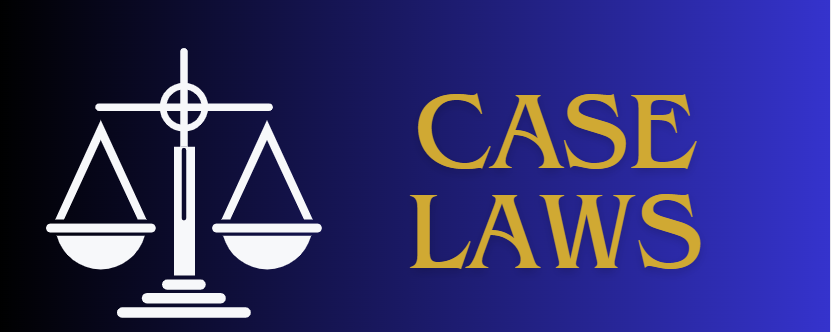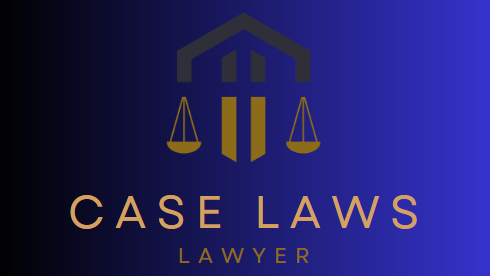PLD 2025 Lahore 207
آئین کے آرٹیکل 199(1)(ب)
(i) کے تحت (اور سیکشن 491 سی آر پی سی کے تحت)، ہائی کورٹ کو یہ اختیار حاصل ہے کہ وہ ہیبئس کورپس کا وِرٹ جاری کرے تاکہ اس کی حدودِ اختیار میں کوئی شخص غیر قانونی طور پر حراست میں نہ رکھا جائے۔ اگرچہ قانونی طور پر یہ وِرٹ نابالغوں کے حوالے سے بھی جاری کیا جا سکتا ہے، لیکن اسے یہ اختیار صرف استثنائی حالات میں استعمال کرنا چاہیے، خاص طور پر جب دوسرے مناسب قانونی طریقہ کار دستیاب نہ ہوں، ملوث بچے بہت کم عمر ہوں، حال ہی میں قانونی تحویل سے ان کو چھینا گیا ہو، اور فوری مداخلت کی ضرورت ہو۔ ایسے معاملات میں، ہائی کورٹ کا کردار عارضی تحویل کے تعین تک محدود ہوتا ہے، جبکہ حتمی تحویل کے فیصلے فیملی کورٹ کو سونپ دیے جاتے ہیں جو کہ جی ڈبلیو اے کے تحت ایسے امور کو مکمل طور پر نمٹانے کا ماہر ادارہ ہے۔ زور اس بات پر ہے کہ اس اختیار کا استعمال اعتدال سے کیا جائے تاکہ خاص طور پر حیاتیاتی ماں کو غیر ضروری صدمہ یا اذیت نہ پہنچے اور فیملی کورٹ کے دائرہ اختیار میں مداخلت سے گریز کیا جائے۔ بین الاقوامی بچوں کے اغوا کے حالات میں (چاہے وہ ہیگ کنونشن کے تحت آتا ہو یا نہ آتا ہو)، ہائی کورٹ مداخلت کے لیے اہل ہے، خاص طور پر جب بچے کو ہٹانا موجودہ قانونی تحویلی انتظامات کی خلاف ورزی ہو کیونکہ اس سے تحویل "غیر قانونی اختیار" والی، "غیر قانونی" اور "ناقابل قبول" قرار پاتی ہے۔ اس قانونی نظام میں بچوں کی جسمانی حفاظت، جذباتی بہبود اور مجموعی فلاح و بہبود کو تحفظ دینے کے ساتھ ساتھ قانونی حدود اور تحویلی حقوق کا احترام بھی اس شہرہ آفاق اور متوازن طریقہ کار کا مرکزی سربراہ ہے۔
قانونی تصور "دعویٰ کی برقرار رہنے کی قابلیت" کو "رہائی کے حق" سے ممتاز کیا جاتا ہے۔ دعویٰ کی برقرار رہنے کی قابلیت سے مراد وہ قانونی حیثیت یا حق ہے جو کسی فریق کو عدالت کے سامنے مقدمہ دائر کرنے کا موقع دیتی ہے۔ اس میں مقدمہ قبول کرنے کے لیے ابتدائی شرائط کا پورا ہونا شامل ہے، جیسے مناسب دائرہ اختیار، فریقین کی قانونی صلاحیت کہ وہ مقدمہ کریں یا مقدمہ کا سامنا کریں، قابل فیصلہ تنازعہ کی موجودگی، اور طریقہ کار کے اصولوں کی پیروی جیسے درست دلائل اور بروقت پیشی۔ اگر مقدمہ برقرار رہنے کے قابل نہ سمجھا جائے تو عدالت اس کے معاملات کا جائزہ نہیں لے گی۔ دوسری طرف، "رہائی کے حق" مدعی کے اس بنیادی حق سے متعلق ہے کہ اسے مقدمے میں جو نجات یا ریلیف طلب کی جاتی ہے اس کا حق حاصل ہے یا نہیں۔ اس کا تعین مقدمے کی نوعیت کی بنیاد پر ہوتا ہے، جہاں عدالت شواہد کا جائزہ لے کر متعلقہ قوانین کا اطلاق کرتی ہے تاکہ فیصلہ کرے کہ مدعی کا دعویٰ جائز ہے یا نہیں۔ رہائی کے حق کا جائزہ تب لیا جاتا ہے جب عدالت نے مقدمہ برقرار رہنے کے قابل قرار دے دیا ہو۔ دوسرے الفاظ میں، جب کسی درخواست کو "قابل برقرار رہنے" کہا جاتا ہے تو اس کا مطلب ہے کہ یہ عدالت کے غور و خوض اور فیصلہ کرنے کے لیے طریقہ کار کی شرائط پر پورا اترتی ہے۔ درحقیقت، عدالت اس بات کی تصدیق کرتی ہے کہ مقدمہ صحیح طریقے سے دائر کیا گیا ہے اور اس کے دائرہ اختیار میں آتا ہے۔ تاہم، یہ تعین مقدمے کی نوعیت پر حتمی فیصلے یا نتیجے پر اثر انداز نہیں ہوتا۔ یہ صرف قانونی عمل کو آگے بڑھنے کی اجازت دیتا ہے، جس سے عدالت دونوں فریقوں کے دلائل سن سکتی ہے، ثبوت کا جائزہ لے سکتی ہے اور متعلقہ قوانین کا اطلاق کر کے حتمی فیصلہ صادر کر سکتی ہے۔
یہ عرضی مندرجہ ذیل شرائط کے تحت نمٹائی جاتی ہے:
(i) مدعی فریق لاہور فیملی کورٹ میں انصاف حاصل کر سکتا ہے۔
(ii) مدعا علیہ نمبر 1 کے خلاف دھوکہ اور فریب کے الزامات سنگین ہیں۔
(iii) فیملی کورٹ کو ہدایت دی جاتی ہے کہ ایک علیحدہ فائل تیار کرے اور دفعہ 476 فوجداری ضابطہ اخلاق کے تحت مدعا علیہ نمبر 1 و 2 اور ان کے شریک کاروں کے خلاف کارروائی شروع کرے۔ فیملی کورٹ تمام دیگر معاملات (بشمول دفعہ 476 کے تحت) میں فریقین کے مابین روزمرہ کی بنیاد پر کارروائی کرے اور انہیں اگلے دو مہینوں کے اندر مکمل کرنے کو یقینی بنائے۔
(iv) بچے اس وقت مدعا علیہ نمبر 1 کے پاس ہیں۔ فیملی کورٹ ایک ایسا نظام الاوقات بھی بنائے تاکہ مدعی فریق بچوں سے ملاقات کر سکے اور مقدمہ کے فیصلے تک مناسب والدین کا وقت حاصل کر سکے۔
(v) کوئی بھی فریق بچوں کو فیملی کورٹ کی حدود سے باہر لے جانے سے قبل اس کی پیشگی اجازت حاصل کرے۔
Under Article 199(1)(b)(i) of the Constitution (and under section 491 Cr.P.C.), the High Court possesses the authority to issue a writ of habeas corpus to ensure that a person is not being unlawfully detained within its territorial jurisdiction. Although legally speaking, it can issue the aforesaid writ in respect of minors, it must only exercise this jurisdiction in exceptional circumstances, particularly when no other adequate legal remedies are available, the children involved are very young, have been recently taken from lawful custody, and there exists an urgent need for intervention. In such cases, the High Court‟s role is strictly limited to determining interim custody, leaving final custody decisions to the Family Court, which has the specialized function under the GWA to handle such matters comprehensively. The emphasis is on exercising this jurisdiction sparingly to avoid undue trauma or harassment, especially to biological mothers, and to avoid encroaching upon the domains reserved for Family Courts. In situations of international child abduction (whether falling under the Hague Convention or not), the High Court is competent to intervene, particularly when the removal of the child breaches existing legal custodial arrangements because it renders the custody “without lawful authority”, “illegal”, and “improper”. This legal framework underscores a cautious and balanced approach to safeguarding children‟s physical safety, emotional well-being, and overall welfare while respecting legal jurisdictions and custodial rights. The legal concept of “maintainability of lis” is distinguishable from “entitlement to relief”. Maintainability of lis refers to a party‟s legal standing or right to bring an action before the court. It includes meeting preliminary requirements for the court to accept the case, such as proper jurisdiction, the legal capacity of the parties to sue or be sued, the existence of a justiciable controversy, and adherence to procedural rules like correct pleadings and timeliness. If a case is deemed not maintainable, the court will not proceed to examine its merits. On the other hand, “entitlement to relief” involves a claimant‟s substantive right to the remedy or relief sought in the lawsuit. This determination is based on the merits of the case, requiring the court to evaluate the evidence and apply relevant laws to decide if the claimant has a valid claim. Entitlement to relief is considered only after the court has determined that the case is maintainable. To put it differently, when a petition is described as “maintainable,” it means that it fulfils the procedural requirements for court consideration and adjudication. Essentially, the court thereby affirms that the lawsuit is correctly filed and falls within its jurisdiction. However, this determination does not affect the final outcome or decision on the case‟s merits. It merely allows the legal process to proceed, enabling the court to hear arguments from both sides, review evidence, and apply relevant laws to reach a final decision.
This petition is disposed of in the following terms:
(i) The Petitioner may pursue remedy before the Family Court, Lahore.
(ii) The allegations of fraud and deceit against Respondent No.1 are serious.
(iii) The Family Court is directed to prepare a separate file and initiate proceedings under section 476 Cr.P.C. against Respondents No.1 & 2 and those complicit with them. The Family Court shall conduct proceedings in all other matters between the Parties (including those under section 476 Cr.P.C.) on a day-to-day basis and ensure they are concluded within the next two months.
(iv) The children are with Respondent No.1 at present. The Family Court shall also draw a timetable so that the Petitioner can access them and have reasonable parenting time until it decides the litigation between the Parties.
(v) Neither party shall take the children out of the jurisdiction of the Family Court without its prior permission.
WP 78185/23
Syed Hassan Murtaza Vs Mariya Bano Khan etc




0 Comments